Disclosure: This article contains affiliate links. We may earn a commission from purchases at no extra cost to you, which helps our travel content.
The twin-engine Cessna banks gently to the west, revealing a surreal panorama that has haunted explorers for centuries. Below us stretches Namibia's legendary Skeleton Coast—a mesmerizing collision of rust-colored desert dunes cascading directly into the turbulent Atlantic. The Portuguese sailors who named this region 'The Gates of Hell' weren't being dramatic; they were being practical. As our pilot points out yet another shipwreck half-buried in the sand, I'm struck by the perfect contradiction this landscape represents: one of Earth's most inhospitable environments has paradoxically become one of Africa's most exclusive luxury destinations. After two decades of business travel to the world's most sophisticated urban centers, I've found myself increasingly drawn to these edge-of-the-map experiences that combine technological innovation with raw wilderness. This two-week expedition along Namibia's northwestern frontier isn't merely a safari—it's a master class in how thoughtful design and sustainability can create extraordinary experiences in the planet's most challenging environments.
The Skeleton Coast: Where Desert Meets Ocean
The Skeleton Coast derives its ominous name from the bleached whale bones that once littered its shores during the whaling era, later joined by the skeletal remains of shipwrecks trapped in its treacherous waters. Today, this 300-mile stretch of Namibian coastline represents one of the last genuinely wild places on Earth—a UNESCO-protected wilderness where the ancient Namib Desert (the world's oldest at 55 million years) collides dramatically with the cold Benguela Current.
My journey begins with a private charter from Windhoek, Namibia's capital, aboard a meticulously maintained Cessna Grand Caravan. The three-hour flight provides a masterclass in geological transformation as manicured suburbs give way to arid mountains, then endless rippling dunes, and finally, that jarring juxtaposition of desert meeting ocean. The pilot, Johan, a third-generation Namibian with over 10,000 hours of bush flying experience, points out landmarks invisible to my untrained eye—ephemeral riverbeds where desert elephants trek, isolated seal colonies, and diamond mining operations that appear as mere scratches on this vast canvas.
From above, the landscape reveals its stark beauty through patterns and textures rather than the vibrant palette travelers associate with typical African safaris. The monochromatic simplicity of sand, stone, and sea creates a minimalist aesthetic that resonates deeply with my appreciation for thoughtful design. It's a landscape photographer's dream, and I find myself reaching for my mirrorless camera almost constantly during our flight, attempting to capture the scale and drama unfolding below.
What makes the Skeleton Coast particularly intriguing from a development perspective is how its extreme isolation has paradoxically preserved it while simultaneously demanding innovative approaches to sustainable tourism. The Namibian government's strict conservation policies limit access to the northern Skeleton Coast National Park to just a handful of operators, creating one of Africa's most exclusive safari experiences by default.
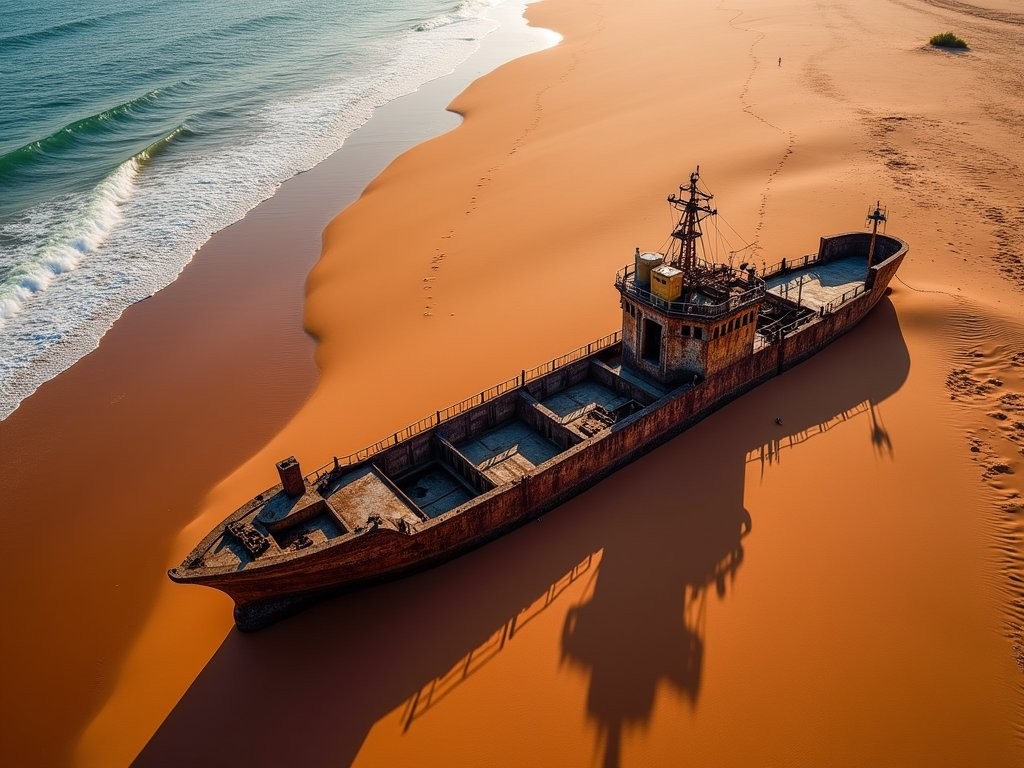
💡 Pro Tips
- Pack polarizing filters for your camera to cut through glare when photographing the contrast between desert and ocean
- Book your safari at least 12 months in advance as the ultra-exclusive lodges have limited capacity and fill quickly
- Request a window seat on the right side of the aircraft when flying north along the coast for the best views of shipwrecks and dune formations
Elite Wilderness Camps: Luxury at Earth's Edge
The concept of luxury in remote wilderness has evolved dramatically over the past decade. No longer defined by opulent excess, today's sophisticated travelers seek authenticity, exclusivity, and meaningful connection—all while maintaining the comfort and service standards of the world's finest hotels. Nowhere is this evolution more evident than in the handful of ultra-premium camps strategically positioned along the Skeleton Coast.
My first three nights are spent at Shipwreck Lodge, an architectural marvel whose distinctive wooden cabins resemble the skeletal remains of vessels long claimed by these shores. Designed by Namibian architect Nina Maritz, the property demonstrates how thoughtful design can both honor and enhance its environment. Each of the ten solar-powered cabins features panoramic windows framing the endless dunes and crashing Atlantic, wood-burning stoves for the surprisingly cold evenings, and private decks where I enjoy sundowners while watching desert fog roll dramatically inland.
The attention to detail extends beyond aesthetics—my suite includes a wireless charging station cleverly integrated into reclaimed driftwood furniture, high-powered binoculars for wildlife observation, and a tablet loaded with scientific literature about the region's unique ecosystem. The bed, positioned to maximize both sunrise and sunset views, is dressed in organic cotton linens and topped with a luxury down comforter that proves essential during the surprisingly cold desert nights.
Further north, Hoanib Skeleton Coast Camp represents a different approach to luxury wilderness accommodation. Operated by Wilderness Safaris, this award-winning property blends seamlessly into its environment through innovative canvas-and-timber structures that can be completely removed without leaving a trace. The main lounge, an architectural triumph of tensile fabric and sustainable materials, creates a naturally cooled environment despite the harsh desert conditions.
What distinguishes these properties isn't just their design but their operational philosophy. With guest numbers strictly limited (never more than 16 at any time), the staff-to-guest ratio approaches 3:1, creating an experience more akin to staying in a private home than a commercial lodge. My guide, Gabriel, a San bushman with encyclopedic knowledge of desert ecology, becomes both companion and teacher throughout my stay, customizing each day's activities to my interests in both wildlife and sustainable development.
The culinary programs at these remote outposts defy their logistical challenges. Executive Chef Maria at Shipwreck Lodge creates sophisticated menus emphasizing Namibian ingredients—oryx carpaccio with foraged desert herbs, line-caught Atlantic fish with indigenous succulents, and traditional potjiekos (cast-iron pot stews) elevated through modern technique. Each meal is paired with exceptional South African wines from boutique producers, creating dining experiences that would be remarkable even in cosmopolitan settings.
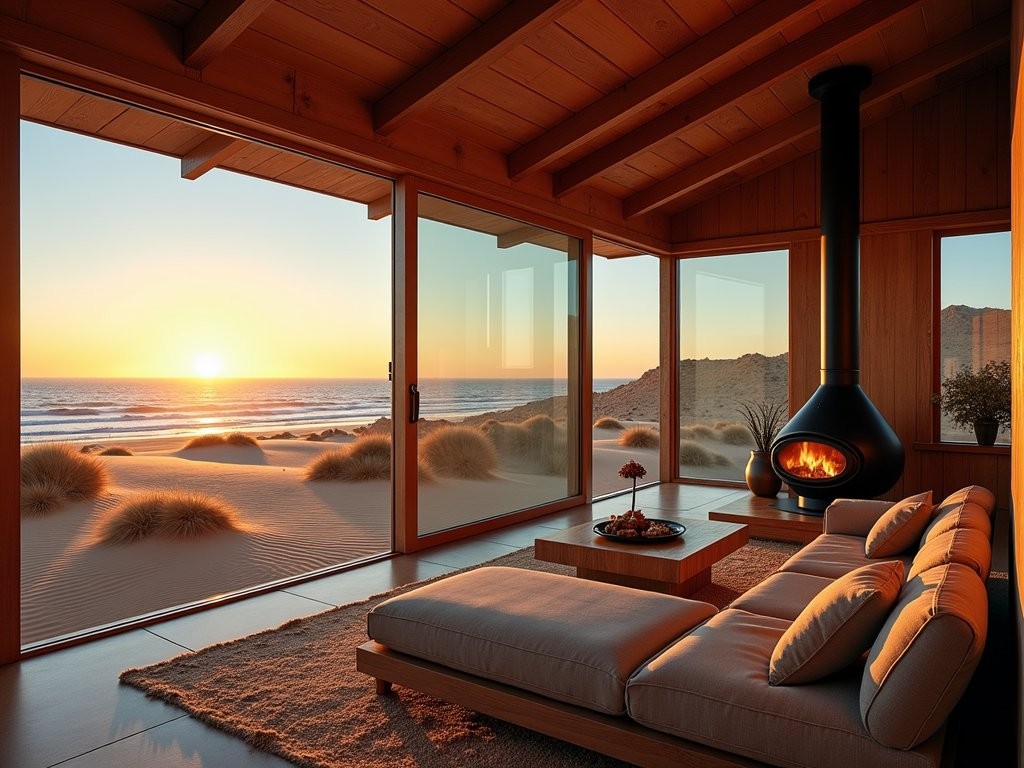
💡 Pro Tips
- Request rooms facing west for optimal sunset views over the Atlantic Ocean
- Pack a high-quality pair of compact binoculars for wildlife viewing from your private deck
- Bring a portable power bank as some camps operate on limited generator hours despite solar capabilities
Desert-Adapted Wildlife: Nature's Ultimate Survivors
The Skeleton Coast's reputation as a desolate wasteland belies its surprising ecological richness. While lacking the teeming herds of East Africa, this harsh environment has produced some of evolution's most remarkable adaptations—wildlife specially equipped to thrive where conventional wisdom says nothing should survive.
The crown jewels of this ecosystem are the desert-adapted elephants. Physically distinct from their savanna counterparts with longer legs, smaller bodies, and the ability to go days without water, these elephants navigate vast territories along ephemeral riverbeds. Tracking these phantoms of the desert becomes a masterclass in conservation technology. My guide Gabriel works closely with researchers who monitor these endangered pachyderms using satellite collars that transmit real-time movement data.
On our second morning, we depart before dawn in a custom-built Land Rover equipped with specialized suspension systems designed to navigate the region's challenging terrain. After three hours following a dry riverbed, Gabriel receives coordinates on his tablet, and we change course toward a stand of ana trees. The anticipation builds as we approach silently, and then—in a moment I'll never forget—a family of eight desert elephants materializes like apparitions, their dusty forms nearly invisible against the landscape until they move.
What follows is a three-hour observation session where I witness behaviors rarely seen elsewhere: matriarchs teaching younger elephants how to dig wells in the sand, calves sheltering in the shade of adults to minimize water loss, and the entire herd communicating through subsonic rumbles that Gabriel explains can travel for miles through the desert floor, alerting other family units to water sources.
For wildlife photography enthusiasts, the Skeleton Coast presents unique challenges and rewards. The harsh light and monochromatic landscape demand technical skill, but the results can be spectacular. I've found my telephoto zoom lens indispensable for capturing detailed wildlife portraits without disturbing natural behaviors, while a polarizing filter helps manage the intense desert glare.
Beyond elephants, the region hosts an improbable array of desert specialists. We track endangered black rhinos moving between hidden springs, spot desert lions that have adapted to hunting seals along the shoreline (one of only two populations worldwide with this behavior), and observe oryx—the iconic desert antelope whose sophisticated nasal cooling system prevents brain damage in extreme heat.
Perhaps most fascinating are the smaller adaptations: sidewinding adders that move laterally across dunes to minimize heat contact, fog-basking beetles that perform headstands to collect moisture on their carapaces, and web-footed geckos that can bury themselves instantly in soft sand when threatened. Each represents nature's ingenious response to extreme conditions—solutions that increasingly inspire biomimetic design in our warming world.
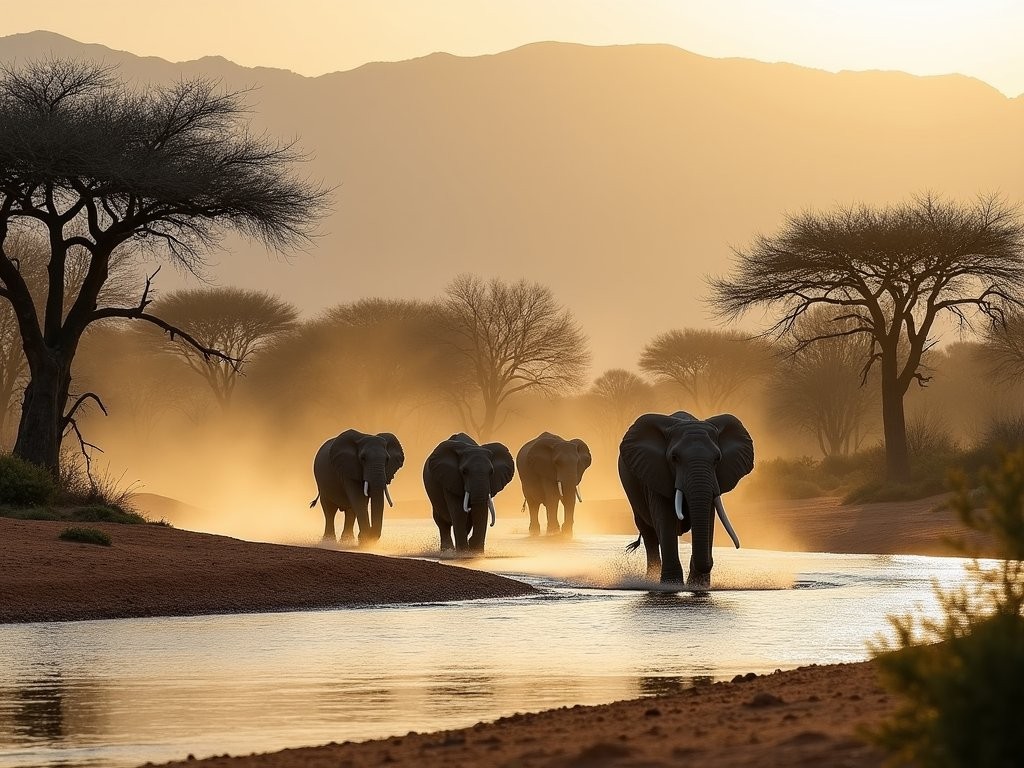
💡 Pro Tips
- Invest in a camera with excellent low-light capabilities as wildlife is most active during dawn and dusk hours
- Always carry at least 2 liters of water per person, even on short excursions
- Wear neutral-colored clothing (khaki, olive, tan) to avoid disturbing wildlife during close encounters
Cultural Encounters: The Resilient Himba People
Any comprehensive exploration of the Skeleton Coast must include meaningful engagement with the region's indigenous communities, particularly the semi-nomadic Himba people who have maintained their traditional way of life despite the harsh environment and modernization pressures.
Through my lodge's community partnership program, I arranged a visit to a temporary Himba settlement along the Hoanib River—not the performative cultural tourism that plagues many African destinations, but a genuine exchange facilitated by years of established trust between the lodge and community leaders.
My visit begins with proper protocols: presenting gifts of maize meal and tobacco to the village headman, then sitting in conversation through a translator who explains that this particular family group moves seasonally between four locations based on grazing conditions for their prized cattle and goats. What immediately strikes me is the sophisticated environmental knowledge system that guides their nomadic patterns—a calendar based not on arbitrary dates but on subtle environmental cues that signal when to move to new areas.
The Himba women, instantly recognizable by their ochre-covered skin and elaborate hairstyles denoting social status, demonstrate the preparation of otjize paste—the reddish mixture of butterfat and ochre that serves as both sunscreen and cultural identifier. When I inquire about the challenges of maintaining traditions in a changing world, a woman named Kamasitu offers a nuanced perspective that defies the simplistic narrative of tradition versus modernity. She shows me how solar-powered mobile phones are now incorporated into their lifestyle, allowing family groups to coordinate movements across vast territories while maintaining their pastoral traditions.
Perhaps most fascinating is the Himba's water management knowledge. My guide Gabriel arranges for us to accompany a group of women on their water collection journey, where they demonstrate techniques for identifying underground springs by observing subtle vegetation patterns and insect behavior. These traditional knowledge systems represent sophisticated adaptive strategies developed over centuries—intellectual property increasingly valuable in our climate-challenged world.
For capturing these cultural encounters respectfully, I've found my compact camera ideal—its unobtrusive design and silent shooting mode allow for natural documentation without the intimidating presence of larger equipment. Always ask permission before photographing individuals, and when possible, return with printed images on subsequent visits—a gesture deeply appreciated in communities where physical photographs remain rare treasures.
To prepare for these cultural interactions, I recommend reading anthropologist Margaret Jacobsohn's "Himba: Nomads of Namibia," which provides valuable context on the complex social structures and environmental adaptations that have allowed these communities to thrive in one of Earth's most challenging environments.
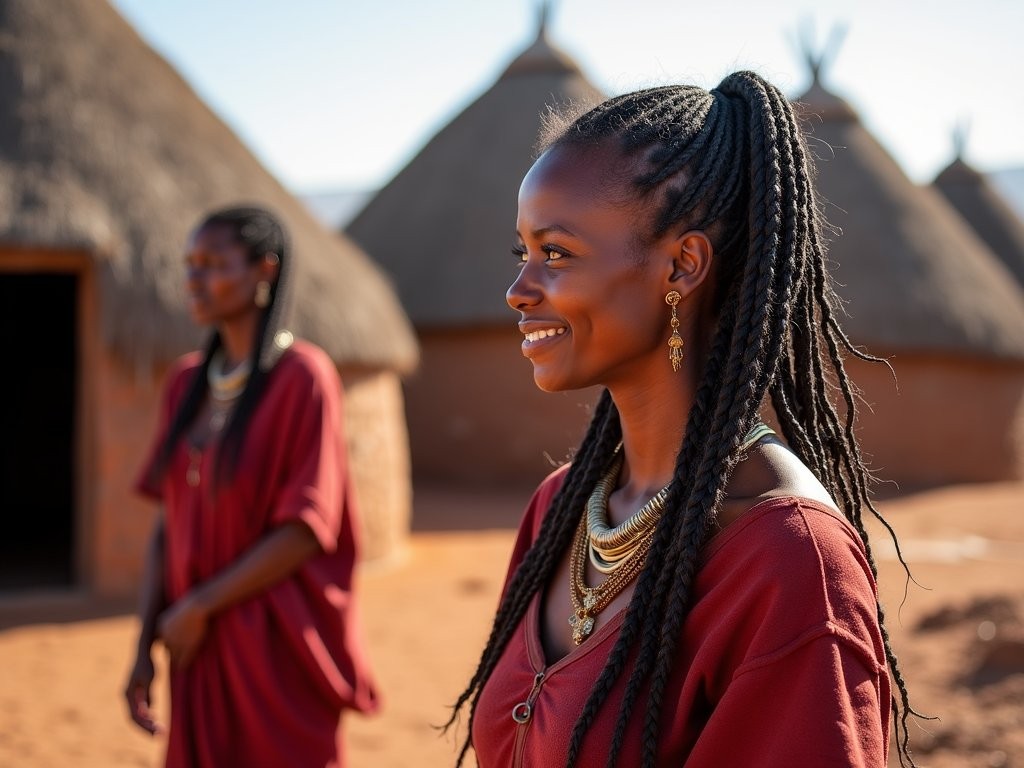
💡 Pro Tips
- Learn basic greetings in Otjihimba (the local language) as a sign of respect before visiting communities
- Bring appropriate gifts like maize meal, tobacco, or tea rather than candy or money
- Ask permission before taking photographs and be prepared to explain how images will be used
Coastal Expeditions: Shipwrecks and Seal Colonies
The maritime history that gave the Skeleton Coast its name remains hauntingly present along this treacherous shoreline. A full-day expedition to the coastal section of the national park reveals why sailors once feared these waters above all others—and why modern adventure travelers now seek them out.
We depart at dawn in specialized 4x4 vehicles designed for the challenging terrain transition from desert to beach. Our destination: the Eduard Bohlen, a German cargo ship that ran aground in 1909 and now sits surreally over 500 meters from the shoreline due to the advancing desert. The journey itself is half the adventure, navigating massive dune fields where our driver, Thomas, demonstrates the technical precision required to traverse soft sand without becoming stranded.
As we crest a towering dune, the shipwreck appears below—a rusted skeleton half-buried in sand, its hull listing at an impossible angle. What makes this site particularly fascinating from a technological perspective is how modern mapping techniques have revealed the vessel's gradual migration inland. Using drone photogrammetry and historical records, researchers have created time-lapse models showing how the shoreline has evolved over the past century, with the shipwreck serving as a fixed reference point in this constantly shifting landscape.
The expedition continues north to Cape Cross, home to one of Africa's largest Cape fur seal colonies. The sensory experience is immediate and overwhelming—the cacophony of 100,000+ seals, the distinctive pungent odor, and the remarkable spectacle of predator-prey dynamics as black-backed jackals patrol the colony's edges. Through high-powered spotting scopes, our guide points out the brown hyenas that specialize in hunting here—one of the rarest large carnivores in Africa.
For this coastal expedition, proper equipment is essential. The combination of salt spray, constant wind, and reflected sunlight creates challenging conditions for both humans and technology. I've found my waterproof daypack indispensable for protecting camera gear and personal items, while quick-drying, UPF-rated clothing provides necessary sun protection.
The day concludes with perhaps the ultimate Skeleton Coast luxury—a private beach dinner set among the dunes. As staff from the lodge materialize seemingly from nowhere to establish an elegant dining setup complete with Persian carpets, lanterns, and a full bar, I'm struck by the logistical mastery required to create such refined experiences in this remote environment. Chef Maria has prepared a seafood feast highlighting sustainable local species—kabeljou and angelfish caught by local fishermen that morning, paired with South African Chenin Blancs that stand up beautifully to the briny flavors.
As we dine under stars of unimaginable clarity, our conversation turns to the future of this fragile ecosystem. The very isolation that has preserved the Skeleton Coast now makes it increasingly attractive to travelers seeking Earth's last pristine landscapes. The delicate balance between conservation, community benefit, and sustainable tourism represents one of the most fascinating development challenges I've encountered in my global travels.
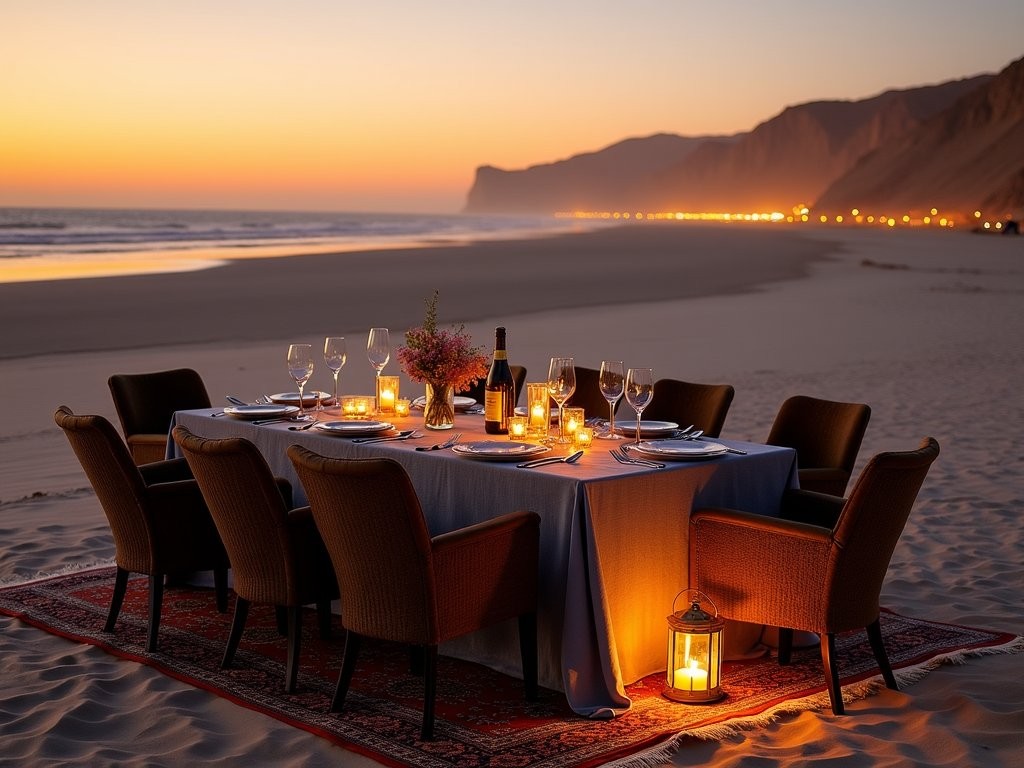
💡 Pro Tips
- Bring a bandana or buff to protect your face during sudden sandstorms along the coast
- Apply sunscreen liberally and repeatedly - the combination of direct and reflected sunlight causes rapid burning
- Pack a windproof jacket even in summer months as coastal temperatures can drop dramatically with afternoon winds
Aerial Safaris: The Ultimate Perspective
To truly comprehend the scale and diversity of the Skeleton Coast requires taking to the skies. While the standard transfer flights provide impressive overviews, dedicated scenic flights reveal the landscape's full majesty and ecological complexity.
On my sixth day, I board a specially modified Cessna 210 equipped with extended fuel tanks and oversized windows optimized for aerial photography. My pilot, Bertus, is not merely a skilled aviator but a trained naturalist who has mapped wildlife movements throughout the region for over two decades. The aircraft itself represents an impressive marriage of technology and function—its sophisticated navigation systems allowing us to safely explore remote areas while minimizing wildlife disturbance through carefully calibrated flight paths and altitudes.
We depart at first light when the angled illumination creates dramatic shadows across the dunes, revealing their complex morphology. From 1,500 feet, the landscape transforms into abstract art—a mesmerizing canvas of curves, lines and patterns that shift with each change in perspective. Bertus follows the ephemeral Hoanib River from its inland delta to its mouth at the Atlantic, demonstrating how these dry watercourses serve as critical wildlife corridors.
"Watch for movement below," he instructs through the intercom, banking gently to circle above a previously invisible herd of oryx traversing a seemingly featureless gravel plain. Through my camera's telephoto lens, I capture their purposeful movement—a straight-line trajectory toward a distant oasis known only to them.
The flight path takes us over geological wonders rarely seen by ground travelers: the bizarre lunar landscape of the Messum Crater, ancient rock paintings visible on inaccessible cliff faces, and the mysterious fairy circles—perfectly round barren patches whose formation remains scientifically contested. Each feature tells part of the region's evolutionary story, a narrative spanning millions of years yet increasingly vulnerable to climate change.
Perhaps most impressive is witnessing the famous Skeleton Coast fog formation in real-time. As warm inland air collides with the cold Benguela Current, we watch tendrils of mist materialize and creep inland—the life-giving moisture source that sustains this entire ecosystem. Bertus explains how desert-adapted species have evolved to harvest this condensation through specialized behaviors and physical adaptations.
For aerial photography enthusiasts, the Skeleton Coast presents unique opportunities and challenges. The extreme contrast between light and shadow demands careful exposure management, while the aircraft's movement requires fast shutter speeds. I've found that shooting in aperture-priority mode with auto-ISO and a minimum shutter speed of 1/1000 second produces consistently sharp images, while polarizing filters help manage glare when photographing water features and enhance the rich earth tones of the landscape.
The three-hour flight concludes with a dramatic sweep along the shoreline, where we spot no fewer than seven shipwrecks—some well-documented in historical records, others anonymous casualties of these treacherous waters. As we bank inland toward our landing strip, Bertus points out a final marvel: a pride of desert lions resting in the shade of an overturned ship's hull, nature and human history intertwined in a scene possible nowhere else on Earth.
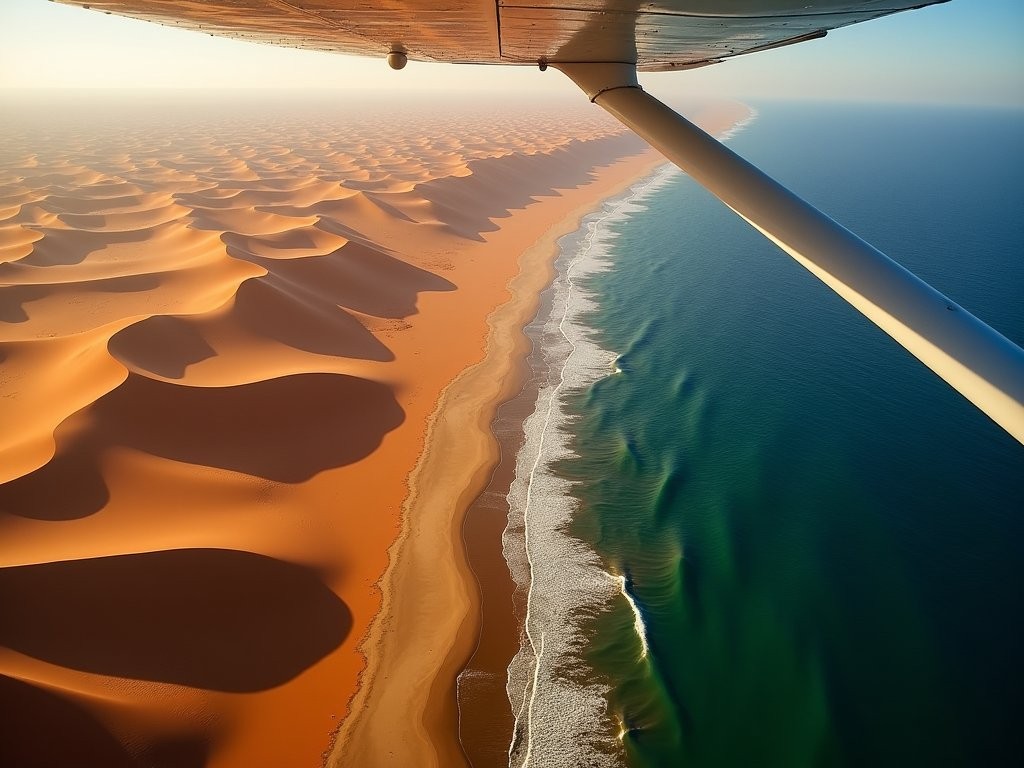
💡 Pro Tips
- Book aerial safaris for early morning when winds are calmest and light creates dramatic shadows across the landscape
- Request a seat that allows unobstructed photography based on your handedness (left side for right-handed photographers)
- Bring motion sickness medication even if you don't normally need it - the combination of heat thermals and photography focus can affect even experienced flyers
Final Thoughts
As our aircraft lifts off from the remote airstrip on my final morning, banking once more over the endless dunes toward Windhoek, I find myself contemplating the paradoxes that define the Skeleton Coast. This landscape of extremes—simultaneously harsh yet fragile, empty yet teeming with specialized life, historically deadly yet now nurturing extraordinary experiences—challenges our conventional understanding of luxury and wilderness. What makes this remote corner of Namibia so compelling isn't just its raw beauty or exclusive accommodations, but how it represents a new paradigm in sustainable tourism: one where scarcity itself becomes the ultimate luxury, where conservation and community development intertwine with high-end experiences, and where technological innovation enables meaningful encounters with truly wild places. For couples seeking an adventure that transcends ordinary luxury travel, Namibia's Skeleton Coast offers something increasingly precious in our hyperconnected world—the opportunity to experience one of Earth's last great wildernesses while supporting its preservation. The journey isn't easy or inexpensive, but for those willing to venture beyond conventional destinations, the rewards are immeasurable: perspectives that alter how you see the world, encounters that deepen your understanding of adaptation and resilience, and memories that will haunt you long after the desert sand has been shaken from your boots.
✨ Key Takeaways
- The Skeleton Coast offers an unparalleled combination of extreme wilderness and sophisticated luxury experiences
- Book at least 12-18 months in advance as the limited number of beds in the region fill quickly
- Invest in proper photography equipment to capture the unique landscapes and wildlife adaptations
📋 Practical Information
Best Time to Visit
May to September (Namibian winter) for mild temperatures and clearest skies
Budget Estimate
$1,500-2,500 per person per night all-inclusive
Recommended Duration
10-14 days for comprehensive exploration
Difficulty Level
Challenging Due To Remoteness And Environmental Conditions

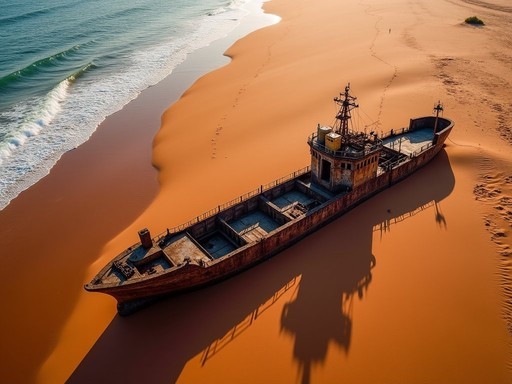
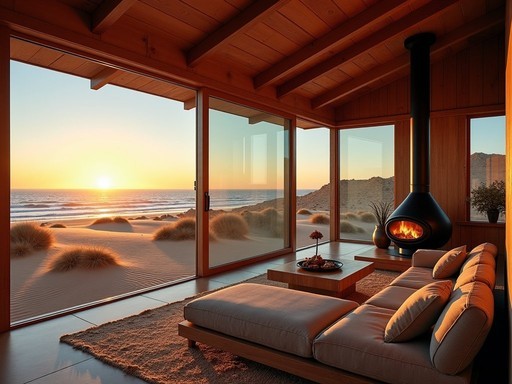
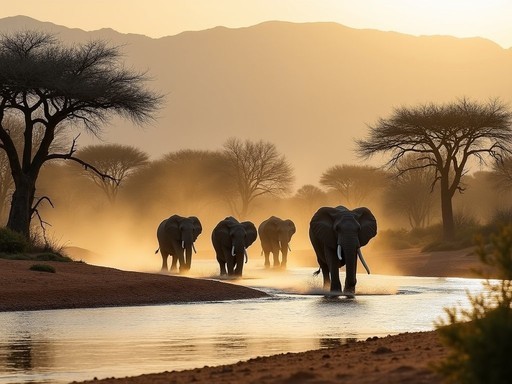
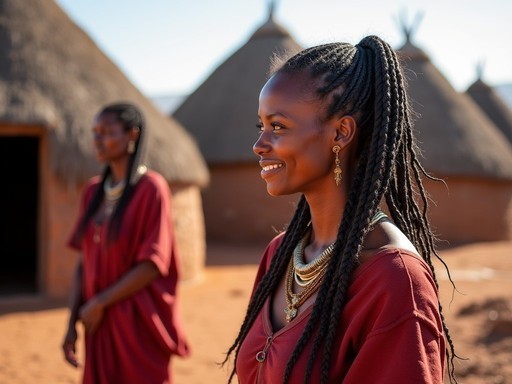
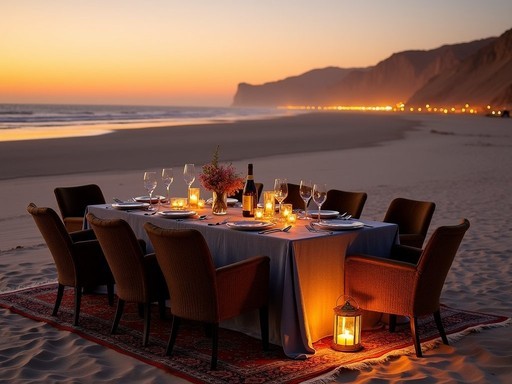
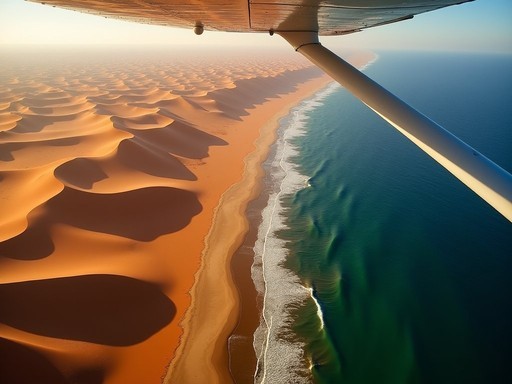


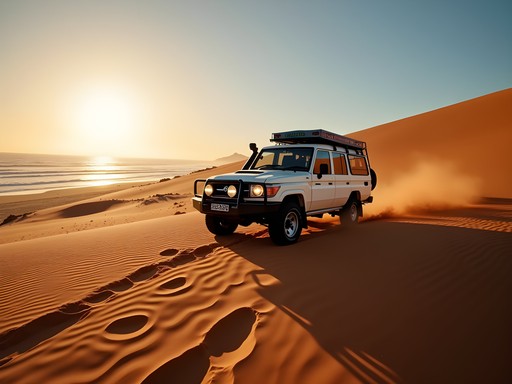
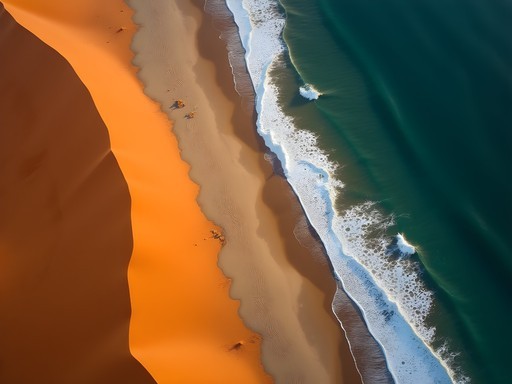
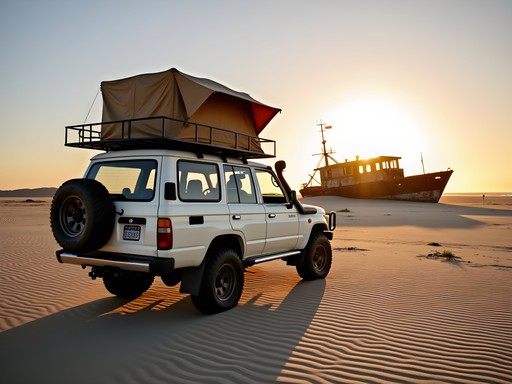

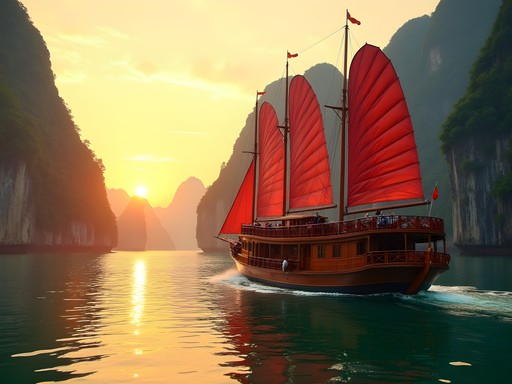


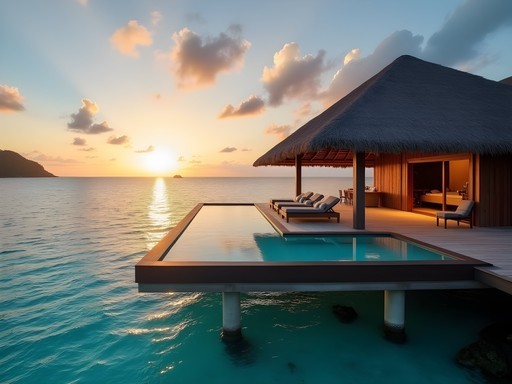
Comments
Casey Andersson
For anyone planning a Skeleton Coast trip, don't underestimate the photography opportunities! The light at dawn over the dunes is pure magic. I'd recommend bringing a wide-angle lens for those vast landscapes where the desert meets the sea, plus a good zoom for wildlife. The dust can be brutal on equipment, so pack plenty of cleaning supplies and a rain cover for unexpected fog. My most memorable moment was capturing a brown hyena silhouetted against the misty shoreline at sunrise - it appeared like a ghost from another world. Also, the night skies are among the darkest I've experienced, perfect for astrophotography if you're into that!
springlife
Any specific camera settings you'd recommend for those misty morning shots? I struggle with exposure in those conditions.
Casey Andersson
I found slightly underexposing (by about 2/3 stop) and shooting in RAW gave me the best results with the coastal fog. The mist creates this beautiful diffused light that can easily blow out highlights otherwise. Also, shoot in bursts when you have wildlife in fog - their movement creates amazing atmospheric effects!
globeway
Those shipwrecks along the coast are hauntingly beautiful! Did you get to explore any up close?
Jean Wells
Dylan, your description of the Himba cultural encounters resonates with my experience. What I found most fascinating was their sustainable adaptation to such a harsh environment over centuries. The knowledge of local plant uses for medicine and cosmetics was remarkable. However, I noticed a concerning trend of increasing tourism impact on some communities. Did you observe any sustainable tourism practices at the camps that meaningfully supported these communities while preserving their autonomy? The delicate balance between cultural exchange and exploitation is something I've been analyzing across my travels in remote indigenous areas.
wandernomad
This looks incredible but also intimidating for someone who hasn't done much Africa travel. How difficult is it to arrange? And roughly what budget are we talking about for a week-long luxury safari here? I'm trying to plan a special anniversary trip.
Jean Wells
I researched this extensively before my trip last year. For Skeleton Coast luxury camps, you're looking at $800-1200 per person per night, all-inclusive. The logistics are complex due to the remoteness, so I recommend booking through a specialized Africa tour operator. They handle all the small aircraft transfers and scheduling. Worth noting that the season matters significantly - I found June-July offered the best wildlife viewing while avoiding extreme temperatures. I used Africa safari planner and they arranged everything seamlessly.
wandernomad
Thanks Jean! That's actually less than I expected for such a remote luxury experience. Appreciate the seasonal tip too!
springlife
Those photos are absolutely stunning! The contrast between desert and ocean is unreal.
wanderlife
Just got back from Namibia last month but didn't make it to Skeleton Coast - major regret after reading this! The desert-adapted wildlife sounds incredible. Did you find the camps worth the splurge? I stayed at some mid-range lodges in Etosha and Sossusvlei but wondering if the remote luxury experience is truly next level.
Casey Andersson
I did the Skeleton Coast last year and can confirm it's 100% worth the splurge! The isolation and having those landscapes practically to yourself is something you can't get in the more accessible parts of Namibia. The wildlife tracking with local guides was mind-blowing - we followed desert lions for hours!
wanderlife
Thanks Casey! Definitely moving it to the top of my list for next time. Did you fly between camps or drive?
Casey Andersson
We did the fly-in safari option - those tiny plane rides between camps were almost as spectacular as the destination itself! Seeing the transition from dunes to coastline from above was surreal.
adventure_mom
Would you recommend this trip for families with teens? My kids are 14 and 16 and love wildlife but I'm wondering if it's too remote or challenging.
redguy
Not Dylan, but we took our 15-year-old and she LOVED it. The guides make special efforts with teens and there's enough adventure to keep them engaged. Zero cell service though, so prepare them for that digital detox!
adventure_mom
The digital detox might be the best part! Thanks for the insight!
desert_dreamer
Those shipwreck photos are haunting! Bucket list material for sure.
roamguide
Great post! How many days would you recommend for the Skeleton Coast portion of a Namibia trip? Planning our itinerary now and trying to balance time between here, Etosha and Sossusvlei.
Dylan Turner
I'd recommend at least 3 nights at a Skeleton Coast camp to really experience it properly. The flights in and out take time, and you'll want full days to explore the dunes, coast, and track wildlife. Sossusvlei needs 2 nights minimum, and Etosha at least 3. Namibia rewards slow travel - the distances are vast!
roamguide
Thanks for the quick reply! That helps a lot with planning. Did you self-drive or fly between locations?
Dylan Turner
I did a mix - self-drove from Windhoek to Sossusvlei (stunning drive!), then flew to the Skeleton Coast camps (necessary for the remote ones), and drove to Etosha afterward. If time allows, driving gives you amazing landscape perspectives, but the small aircraft flights offer incredible views too!
Fatima Sims
Dylan, your writing captures the ethereal quality of the Skeleton Coast perfectly! I was there three months ago researching for my blog, and that juxtaposition of barren desert against crashing waves is unlike anything else on Earth. For anyone planning a trip: the desert-adapted elephants are elusive but SO worth the patience. Our tracker found a small family group moving through a dry riverbed at dawn - watching them delicately navigate the terrain was magical. One tip I'd add: pack a good pair of binoculars for wildlife spotting. The landscapes are vast and you'll want to observe animals without disturbing them. Also, the stargazing is INCREDIBLE - take advantage of those clear desert nights!
roamguide
Fatima, did you stay at any of the Wilderness Safaris camps? Considering splurging for my 40th next year but wondering if they're worth the hefty price tag.
Fatima Sims
Absolutely worth it for a milestone birthday! I stayed at Hoanib Skeleton Coast Camp and it was exceptional. The guides are incredible, and the all-inclusive aspect (including flights) makes the logistics seamless. Just book well in advance - they fill up quickly!
Venture X
Premium card with 2X miles, $300 travel credit, Priority Pass